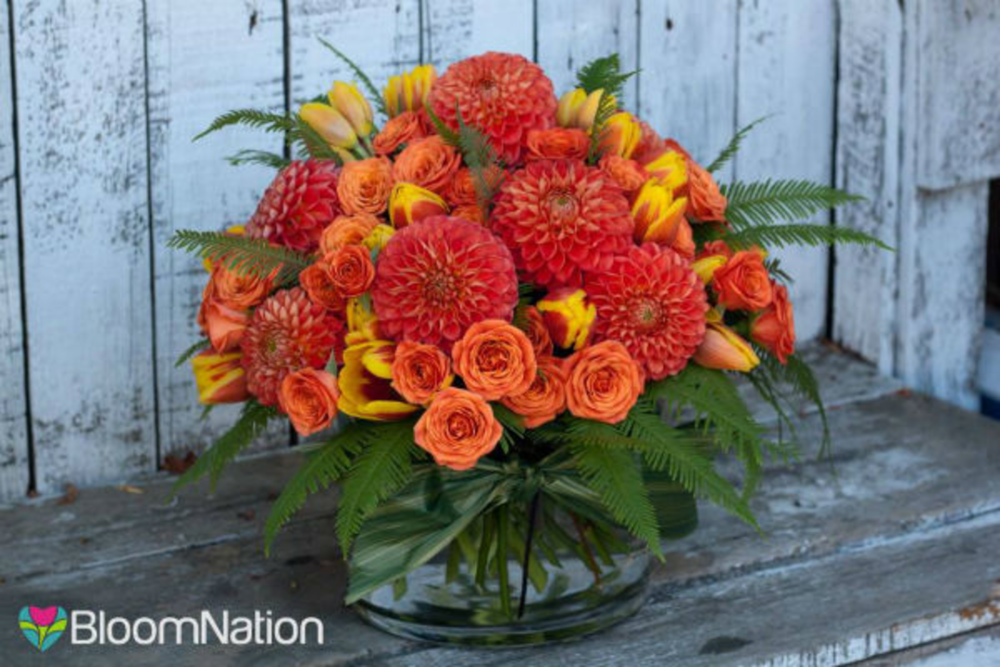Word-of-mouth marketing is essential for any industry. But is relying solely on reviews enough for a budding business? One company’s cofounder seems to think so. Gregg Weisstein, cofounder and chief operating officer of BloomNation.com, says that the online flower ordering startup primarily relies on referrals from customers and florists to make its business grow.
Weisstein compares large online flower ordering companies, like 1-800-Flowers, to brokers. He says that these massive floral companies pay $20 to $30 to acquire a customer through Google AdWords. Once they get customers to visit their sites, he says they then sell the customers stock images of floral arrangements and wire the orders out to local florists. After the orders have been fulfilled, Weisstein says half of the money goes to the florists, and the flower company keeps the other half, which helps to pay for expenses such as advertising costs.
DM News reached out to 1-800-Flowers for a response to these claims; however, the online flower ordering company didn’t respond to the inquiry by the time of publication. As reported in a previous article from DMN 1-800-Flowers does use AdWords, according to a previous interview with Amit Shah, VP of online, mobile, and social for 1-800-Flowers and as reported in a case study produced by Google.
“What most customers don’t realize is that these guys are just brokers—literally just middlemen,” Weisstein says.
This traditional flower ordering model has its thorns—mainly transparency. Few customers know that half of their money actually goes to the florist, Weisstein says. He adds that because customers don’t know which florist created their arrangements—only that it came from a service like 1-800-Flowers—florists have little accountability.
Weisstein says that’s where BloomNation comes in. Similar to Amazon, eBay, or Esty, BloomNation created a marketplace that allows local florists to upload images of their arrangements to an open-source platform, he says. Store hours, location, inventory, and customer reviews for each florist are also featured. After a customer purchases an arrangement from a specific vendor, BloomNation processes the order and then sends the florist the customers’ name, email address, and phone number. This information allows the florist to contact the customer if there are any issues with the arrangement or delivery. The florist then sends customers pictures of their arrangements before delivering the flowers to validate the order. Once the flowers have been delivered, BloomNation gives 90% of the order money to the florist and keeps 10%, which the company uses to cover costs like processing fees, Weisstein says.
Not only does this business model provide more transparency between the customers and florists, but it also empowers florists to grow their business by obtaining loyal customers, rather than just sporadic orders, Weisstein adds.
“Florists really saw that these brokers are just really acquiring orders,” he says. “But through BloomNation, they’re actually getting customers because they get all of the customer information. The customer knows who they’re buying from. If [the florists] do a great job, that customer is going to come back to them, repeat orders, and become customers for life.”
However, the 10% bushel BloomNation rakes in doesn’t leave the company with much money to grow its budding business through advertising.
“We don’t really spend money on marketing,” Weisstein says. “That’s not what we do.”
As a result, the startup, founded in 2011, primarily relies on word-of-mouth-marketing to drive orders. For instance, Weisstein says that BloomNation offers customers discounts if they share their experience on social media. The company validates these reviews, he adds, to ensure that they’re genuine. BloomNation also depends on florists to spread word about the company by talking to customers and hanging signs in floral shops.
“We actually get all of these florists working for us for free and telling these flower purchasers to use BloomNation versus us having to spend money to get customers,” Weisstein says.
But to say that BloomNation doesn’t do on any marketing would be untrue. For example, the online marketplace leverages social media. The startup posts pictures of arrangements on its social platforms and produces an array of seasonal articles on its blog, with topics ranging from recipes to wedding ideas.
And because the floral industry is a seasonal business—the weeks leading up to Valentine’s Day and Mother’s Day are peak sales times—BloomNation uses email to remind customers to place orders for upcoming holidays. Weisstein says that BloomNation can even send personal reminders.
“If you’d like to send flowers to your mom for her birthday, just let us know when your mom’s birthday is, and we’ll send you a reminder for when her birthday is coming up,” he says.
BloomNation also sends shopping-cart-abandonment emails to customers who fail to complete an order. These emails generate open-rate percentages that are in the “mid 40s,” according to BloomNation.
Data also plays a key role the blossoming of BloomNation’s business. According to Weisstein, customers can choose from thousands of flower arrangements within the marketplace. To provide customers with a more relevant experience, BloomNation pushes the pictures of arrangements with the most clicks towards the top of the website.
“For us, it’s a big task [in terms of] how do we manage all of this product?” Weisstein adds.
However, the place where BloomNation and its competitors differ is SEO. Weisstein says that the company doesn’t do any pay-per-click ads.
So although BloomNation may be in the seedling stages of its marketing strategies, it’s definitely established some basic roots and has room to grow.






